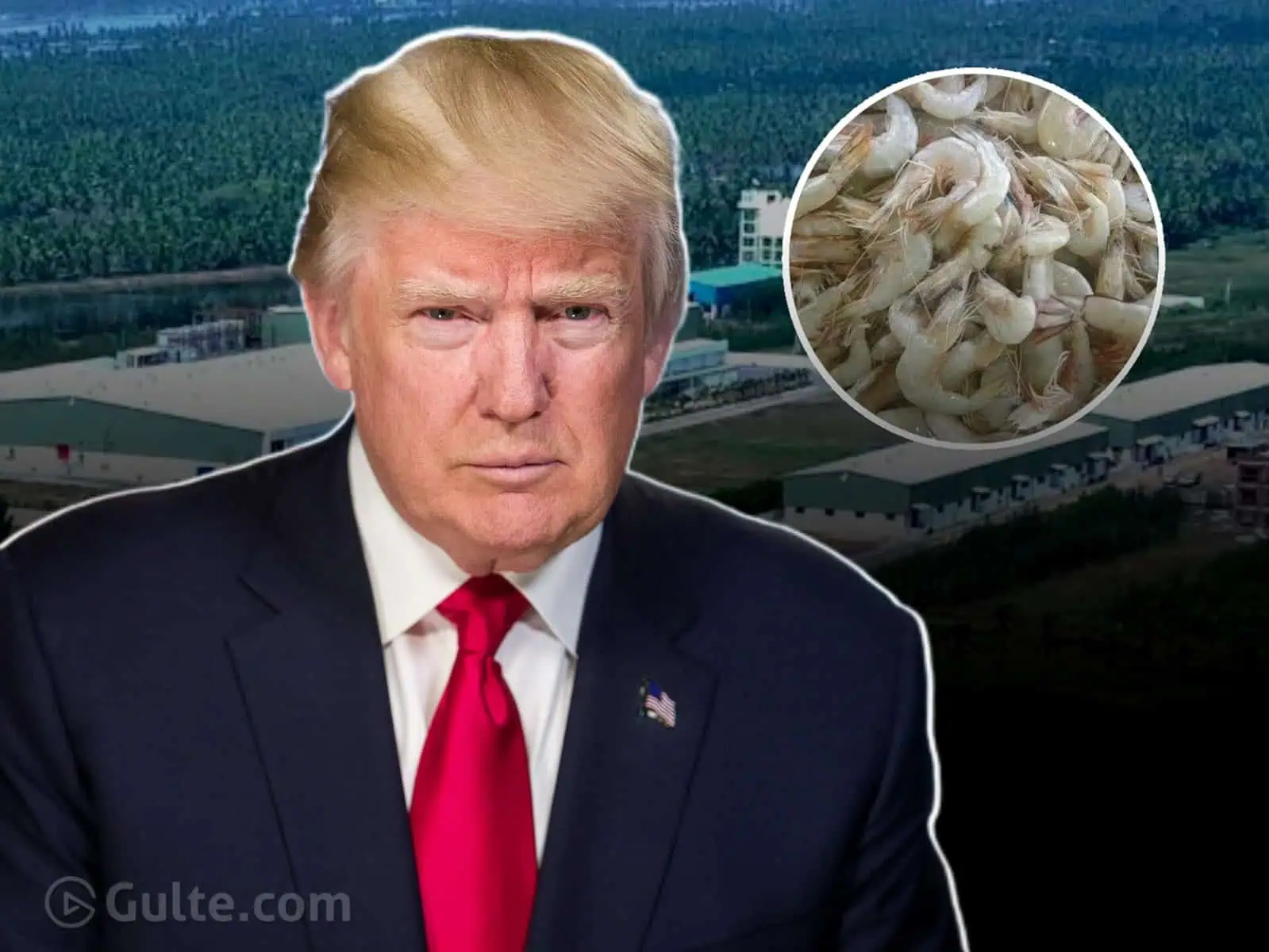The inception of the Donald Trump administration in the United States has been marked with volatility and unexpected tariff applications. In this context, the new tariff slabs announced by Trump has had an adverse effect on the aqua industry in the Godavari area of Andhra Pradesh.
The aqua industry is already struggling with logistical expenditures and unpredictable cultivation outcomes. At the top of that, the new tariff slabs imposed by the Trump government on shrimp imports has led to a further decline in the global export prices from these aqua farms in Godavari.
It can be noted that, of the 4 lakh tonnes of shrimp that is annually cultivated in Godavari region, 3.5 lakh tonnes gets exported.
Previously, the farmgate price for 100-count Vannamei shrimp stood at around ₹290 per kg. After the tariff hike, prices have dropped significantly, now ranging between ₹220 and ₹230 per kg — a fall of ₹60 to ₹70 per kg, severely impacting farmers’ margins.
Similarly, larger-sized shrimp like the 60-count variety, which earlier fetched ₹380 per kg, are now being sold at ₹310 to ₹320 per kg. This ₹60–₹70 price drop is attributed directly to reduced demand from U.S. buyers, who are turning to competing exporters like Ecuador and Indonesia that face fewer trade restrictions.
The reduced profitability has left many aqua farmers struggling to break even, especially given the rising costs of feed and electricity.
The U.S. recently raised countervailing duties on Indian shrimp exports from 4.36% to 5.77%, worsening the pricing crisis. Additionally, fears around the proposed India Shrimp Tariff Act—which could hike tariffs to 40% by 2026—have led to further market instability.
With prices falling and input costs rising, farmers are calling for urgent government intervention to avoid mass production halts and financial collapse in this vital export industry.
Related

